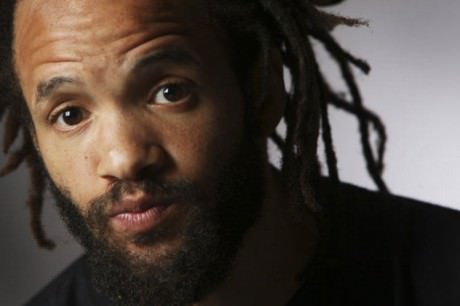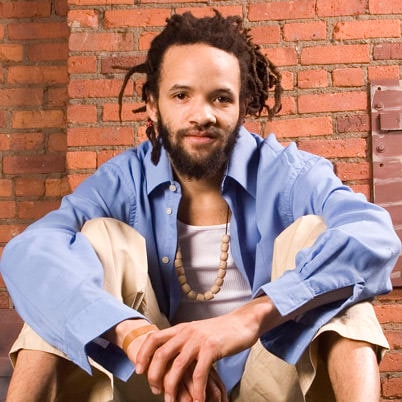Savion Glover, artist, actor, choreographer and tap dance superstar extraordinaire, is widely known to everyone, young or old, who loves tap. His latest offering, SoLe Sanctuary offers audiences a hoofer’s meditation in the art of rhythmic tap dance. Before a packed Sunday evening audience at George Mason University’s Center for the Arts on January 22, 2013, Mr. Glover demonstrated his unique style of tap dancing, known as “hitting” which means one’s ability to say something to express oneself, to complete a tap sequence.

Mr. Glover has frequently been identified by many as the future of tap. As a choreographer, his work has almost single-handedly helped revitalize and maintain tap dancing as an art form in the modern dance world. The recipient of mentoring by numerous legendary tappers such as Gregory Hines, Sammy Davis, Jr., and Jimmy Slyde, among others, all of whom passed on their unique moves and guidance at various stages in his artistic life, Glover skillfully demonstrates the different techniques made famous by each, and then blends them all into an exultant stylistic brew that is his and his alone. When once interviewed, Glover stated his style was young and funk. Asked to describe funk, he replied it is the bass line — anything that gets one’s head on beat. It is riding with the rhythm, a pulse that keeps one rolling with the beat. This is Funk, Savion style.
Mr. Glover’s style successfully keeps tap real, focusing its cadenced syncopation solely in the feet to honor its authentic African-rooted sound. Although portions of his dance were accompanied by musical soundtrack and an extract of Gregory Hines’ poetry, once read in tribute to Sammy Davis Jr., for the most part it was his rhythmic tapping alone which created a myriad of sounds, pulsating with the beat accompanied by tap dance collaborator Marshall Davis, Jr., who graced SoLe Sanctuary’s performance with his exceptional talent. Mr. Davis demonstrated his special skill of full-body quaking, much like that one sees when ice-skaters go into a high speed spin rotation. Davis, Glover’s long time friend and colleague also performed with him in Bring in ‘da Noise, Bring in ‘da Funk’ in 1991.
But SoLe Sanctuary is not about Glover himself. His goal is for people to appreciate tap’s original African American roots, sans the jazz influence and commercial Hollywoodesque characterization of earlier years. His focus is to honor the luminosity of those tap masters who came before, whose talent changed the genre and from whom Glover draws spiritual fulfillment.
When the curtain rises, we see Glover at the rear of the stage pensive and penitent, as if paying his respects to the tap artists he reveres. One long rectangular platform, reserved for dancing, is laid horizontally across the front of the stage while a lone monkish white-clad male is seated with legs folded, in apparent meditation, to the left rear stage. An apt substitute for stained glass, seven suspended portraits of Glover’s mentors, the great hoofers of the past, dangle above. Even without the accompaniments of a traditional alter, pew seating or cross as in usual church settings, one quickly gathers that the atmosphere is a place of prayer, meditation and honor.
As he matured in this art form, Glover later developed his own tap style, which he christened “free-form hard core,” while working with dancers such as Gregory Hines, Henry Le Tang, and Sammy Davis, Jr. To his credit, few tap artists use the inside arch of the foot to create sound, as Glover does, adding a whole range of sounds not possible with standard heel and toe movements.
From the beginning, learning from established master tappers was important to Glover. He strongly believes in honoring tap artists, mostly African-American, who comprise the history of tap in the United States. His 1995 work, Bring in’da Noise, Bring in’da Funk, a hugely successful Broadway show, combined explosive dancing with Glover’s interest in the roots of tap. The work, which traced the history of black America through its dance forms, from slavery to the present day, won Glover a Tony Award for Best Choreography.

Glover continues to honor his lifetime commitment to mentor and influence younger generations, particularly African-Americans, and to keep them involved in tap he frequently tours schools across the United States. Additionally, his contemporary style attracts younger audiences who thrive on speed and power and appreciate the modern twists, such as hip hop, he incorporates into his work.
Running Time: One hour forty-five minutes, with no intermission.
SoLe Sanctuary played January 20, 2013 at 8:00 p.m., at George Mason University’s Center for the Arts – 4400 University Drive, in Fairfax, VA (the intersection of Braddock Road and Route 123). Check their calendar for future events.
https://youtu.be/nlpvhtd1uaI




